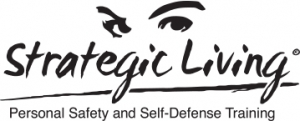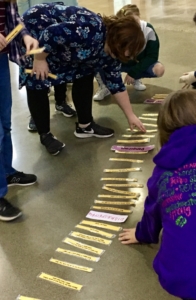Do you feel dismayed but helpless, again, in the face of yet another senseless act of violence?
Like many other Americans, I was dismayed to hear of the murders last week (Tuesday, March 16, 2021) in Atlanta of 8 people, mostly women of Asian descent. Dismayed, but sadly not really surprised. I was again dismayed, and not really surprised, at the subsequent discourse, if these homicides really fall into the category of hate crime.
A hate crime is broadly and ofttimes vaguely described as a criminal act, with the addition of being motivated at least in part by the victims’ perceived race, religion, ethnicity, gender expression, national origin, etc. There are federal hate crime laws, as well as hate crime laws in 47 states. These would be added on to underlying criminal charges. First, though, they would need to be identified as hate crimes by law enforcement and prosecutors. You can read a bit more in this article, and why it’s application and enforcement became problematic.
We emPowerment self-defense teachers often talk about the “red flags,” about paying attention to a person’s actions. Back to Atlanta earlier this week. The murderer bought a gun that day. He then went to one spa and murdered people. And, rather than leaving and walking to the next doorway, to some other business, to continue his shooting spree, he got into his car and drove to the next target, another spa. And then to a third. These businesses were targeted. All spas, connected to Asian women. This looks pretty deliberate, and not like someone who is just “fed up” or “having a bad day,” as one law enforcement officer tried to explain the murderer’s actions. I’ve had bad days too, gotten “fed up” with circumstances — I bet you have too — and yet somehow I’ve managed to figure out how to get through those times without committing homicide (I bet you have too).
And it is past frustrating when those who have authority to wield power to name an action — “is it REALLY a hate crime?” — drag their feet on what seems to be obvious.
Which is a significant part of the issue. A few months ago I blogged (and FB Lived, and made a video) about Homeroom, a restaurant in Oakland that turned processing sexual harassment claims around. Rather than the waitstaff telling the manager that a customer was harassing them and the manager deciding if it was really harassment and what, if anything to do about it, the waitstaff themselves now determined the level of harassment and the manager then had a clear prescribed course of action. See below for links to the media.
When those who have been victimized have little to no say in defining their reality, in labeling what they lived (or not) through, they are disempowered. Invisible. Out of sight, out of mind? So that we more privileged people can get on with our lives without too much discomfort?
It may seem that quibbling over a label is a distraction from the real story, which is that 8 people were murdered in another senseless act of violence. Those labels do matter, they do contribute to whether or not we recognize our history of violence, and how much we acknowledge that systemic ignorance needs to be daylighted. We can’t change history, but we can learn from it so we can change the course of our future.
What can we do? Support our Asian friends and colleagues publicly; listen to them and work to imagine their perspective. Learn some bystander intervention skills. And let our public servants know that this misuse of power is not acceptable.
I can whole-heartedly recommend these sources for online bystander/upstander intervention training:
• Hollaback!: https://www.ihollaback.org/harassmenttraining/
• Center for Anti-Violence Education: https://www.caeny.org/upstander
• Defend Yourself: https://defendyourself.org/bystander-intervention/
Violence thrives in silence.
Speak up, and live life.
Media about Homeroom (the restaurant):
• Blog: https://www.strategicliving.org/creating-support-and-safer-spaces/
• FB Live: https://www.facebook.com/98483803840/videos/218376709673444
• Vimeo or YouTube: https://vimeo.com/487661680 or https://www.youtube.com/watch?v=wCwGDdXlEmo


 iss. Some red flags are subtle, some really blatant. They are all specific behaviors that somebody is doing that bumps into one of your boundaries.
iss. Some red flags are subtle, some really blatant. They are all specific behaviors that somebody is doing that bumps into one of your boundaries. tend to cross her feet, and folded her arms, not exactly across her body but in front. Those aspects of her body language were what we self-defense teachers may have called “submissive,” if we restrict ourselves to that narrow continuum of submissive to assertive to aggressive. Which points more to shortcomings in our attraction to oppositions, contrast, and dichotomies. Amy came across as both attentive and relaxed, not aggressive, not assertive, not trying to define and stick her boundaries, and her body language — rather than submissive — was an invitation to connect.
tend to cross her feet, and folded her arms, not exactly across her body but in front. Those aspects of her body language were what we self-defense teachers may have called “submissive,” if we restrict ourselves to that narrow continuum of submissive to assertive to aggressive. Which points more to shortcomings in our attraction to oppositions, contrast, and dichotomies. Amy came across as both attentive and relaxed, not aggressive, not assertive, not trying to define and stick her boundaries, and her body language — rather than submissive — was an invitation to connect.